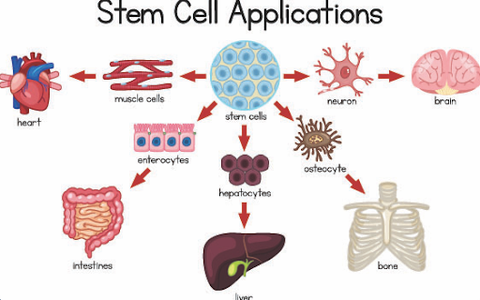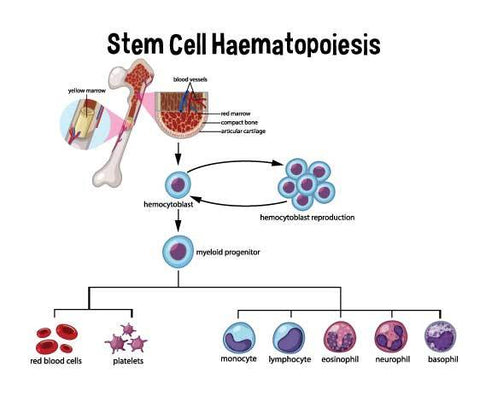Sea Buckthorn Extract Activates Stem Cell Function in Human Study
- Home /
- Wonders of Sea Buckthorn blog
- Sea Buckthorn Extract Activates Stem Cell Function in Human Study
By Admin Email , published Oct 25, 2019
An exciting new study has shown that sea buckthorn extract had a positive effect on stem cell activity in the human body. Intrigued by the antioxidant rich properties of sea buckthorn berry, researchers wanted to see how it could affect various types of stem cells. Since human research has so far been limited, this could be important for understanding how sea buckthorn works in the body.
Sea buckthorn berries are high in antioxidants, and researchers were specifically interested in the proanthocyanidin antioxidant content of the fruit. They used an extract from sea buckthorn berries on a group of healthy adults and looked at how certain stem cells were affected when consumed by the subjects.
Greater Interest in Preventive Health
It’s no surprise that interest in preventive health maintenance has grown over the years. Places like the US, where the focus has mostly been on disease management in the past, now have large parts of the population looking for natural ways to stay healthy.
This renewed interest in self care and healthy lifestyles has pushed public knowledge about nutrition to the forefront. We’ve seen an explosion of new nutritional supplements, focus on whole foods, and superfoods over the past ten years.
Natural Options
There has been more use and thus, research on a number of so called “super-fruits”, including goji berries, amla, acai, and aronia. One of the lesser known berries in this class of nutrient dense, exotic fruits is the sea buckthorn berry.
Learn more about rare and exotic sea buckthorn fruit
Sea buckthorn stands out as not only a major source for antioxidants, but as a source of omega fatty acids, including the rare palmitoleic acid, also known as omega 7.
The Rich Nutrition of Sea Buckthorn
It’s no wonder that researchers are looking at sea buckthorn more each year. The plant has an impressive amount of nutritional compounds, making it an obvious choice for modern research studies.
“Overall, SBB is a good source of minerals, especially calcium, phosphorous, iron, and potassium, as well as vitamins C, B1, B2, E, A, and K. SBB is also a good source of carotenoids, mainly β-carotene, lycopene, lutein, and zeaxantin; phytosterols, mainly ergosterol, stigmasterol, lanosterol, and amyrins; polyphenols, notably proanthocyanidins; and flavonoids, mainly quercetin, kaempferol, myricetin, and isorhamnetin. Other bioactive compounds also identified in SBB include hippophae cerebroside, oleanolic acid, ursolic acid, 19-alpha-hydroxyursolic acid, dulcioic acid, 5-hydroxymethyl-2-furancarboxaldehyde, cirsiumaldehyde, octacosanoic acid, palmitic acid, and 1-O-hexadecanolenin.”
Stem Cells
Most people have heard of stem cells, but not everyone knows what they are and what they do. Stem cells create new cells for the body, particularly when we are young and the body is still growing.
While there are many more stem cells present in younger people, adults also have stem cells.
Stem cells are unique because they divide quickly and can change into other types of cells. This is an important function because stem cells replace specialised cells (like blood cells or brain cells for example).

How Stem Cells are Used by the Body
On their own, stem cells don’t have any specialised function in the same way that the cells that make up the heart or lungs might. This is particularly true in embryonic stem cells, which are present when the body is in the embryo phase of life.
Adult stem cells do exist, and they tend to have more specialized functions within the body. They work in the same way, but each organ in the body has its own set of stem cells to help repair damage. For example, there are bone marrow specific stem cells and skin specific stem cells.
Adult Stem Cells
Adult stem cells do not have as much activity as embryo stem cells. Therefore, it’s thought that the way we age is affected by the slower rate of division by older stem cells.
The study of adult stem cells has helped our understanding of how the human body ages, how it recovers from injury, and what happens to the body when affected by disease.
There are already therapies that use stem cells in the medical world. They’re used in patients who are recovering from chemotherapy to help the damaged cells and even help boost immunity. Stem cells are also used for diseases like lymphoma and leukemia.
Understanding how to support these cells and help adult stem cells regenerate better is of great interest to many in the scientific world.
The Study
Researchers looked at endothelial stem cells, which are the type that are found in bone marrow, for the study. They also were looking for protein markers from white blood cells that are present when stem cells are working- repairing and doing maintenance in the body.
“The aim of this study was to evaluate the effects of a proanthocyanidin-rich extract of sea buckthorn berry (SBB-PE) on the numbers of various types of adult stem cells in the blood circulation of healthy human subjects.”
Each subject was given an oral dose of a sea buckthorn berry extract or placebo. After a period of time, the subjects were given blood tests. The subjects were all healthy adults.

The Results
Researchers found that the sea buckthorn extract supported stem cell mobilization and indeed, increased the number of circulating stem cells.
“By documenting the ability of SBB-PE to support stem cell mobilization and to increase the number of circulating stem cells, we have uncovered a new mechanism of action behind many of the health benefits that have been historically associated with SBB, as a part of its use in Tibetan, Mongolian, and Chinese traditional medicine. Once mobilized, bone marrow stem cells can participate in the process of tissue repair and modulate local inflammation, supporting the use of SBB-PE in overall health maintenance.”
What this Means
Sea buckthorn fruit, juice, and oils have been used for thousands of years in traditional medicine across Asia and parts of Europe. Although we have a general idea of how sea buckthorn works in the body, each new study helps us understand how.
The study helps make sense of some of the many benefits of sea buckthorn oil. We know that sea buckthorn oil is excellent for supporting skin that is healing. We know that sea buckthorn oil helps support health from a cellular level. Now we know that sea buckthorn may help activate stem cell response in the body, which can help activate the body’s natural repair system. This could help explain why sea buckthorn oil is so beneficial to the human body.
The Importance of Human Research
The clinical study followed a randomized, double-blinded, placebo-controlled crossover design. This study was also done by a third party group of researchers who were not hired to do the work. In fact, NIS labs- the group that did this research, specializes in studying natural products and their effect on the human body.
Research of this kind is so important to the advancement of the understanding of sea buckthorn oil and it’s real medicinal qualities. While animal models can offer interesting insight, human studies are especially helpful in confirming many of the benefits seen in sea buckthorn’s use as a “folk medicine” or home remedy.
Sea Buckthorn Supports Everyday Health
The research shows that sea buckthorn oil can be a healthy addition to your daily regimen- by supporting the body’s natural healing mechanisms. It helps explain why sea buckthorn oil is used for such a wide array of applications. The rich antioxidant content of sea buckthorn may help to mobilize stem cell activity and boost the number of stem cells in the blood.
Someday, scientists may be able to create new medicines and therapies by harnessing the functions of sea buckthorn oil in the body. Every new study that is done will help advance our understanding of sea buckthorn’s powerful nutrition. For now, the study confirms that sea buckthorn oil may be a great support for your body’s natural functions and everyday health.

References:
https://stemcells.nih.gov/info/Regenerative_Medicine/2006Chapter2.htm
*Statements on this website have not been evaluated by the Food and Drug Administration. The statements and products discussed are not intended to diagnose, treat, cure, or prevent any disease.













